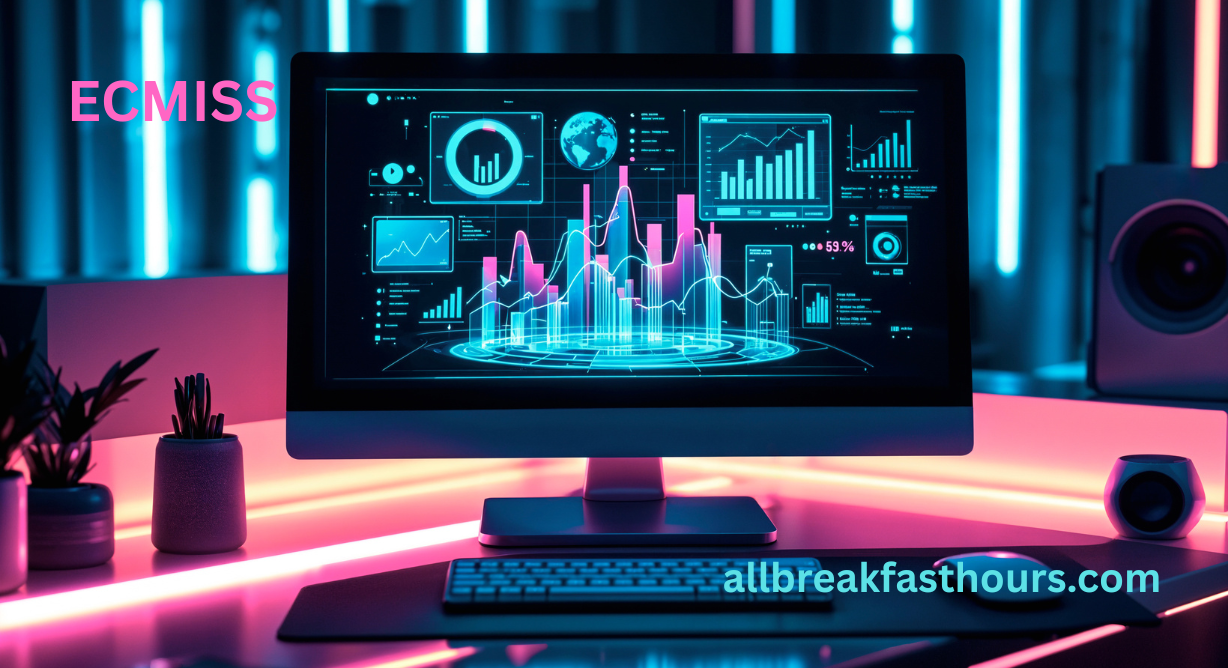Introduction
Part philosophy, part methodology, and part roadmap for the future, ECMISS is becoming an attractive notion in today’s maelstrom of technological innovation. Although it hasn’t been given a single, widely recognised definition yet, subsequent papers and think pieces have clarified a number of interpretations, each of which provides compelling evidence of its potential application in a variety of industries.
Let’s examine what ECMISS might be, its salient characteristics, real-world uses, and why it is more important than ever.
ECMISS: What is it?
1. A Future-Ready Systems Vision
ECMISS, which emphasises AI-powered cohesiveness across infrastructures, is what some sources suggest stands for Enterprise Cognitive Management and Integrated Synchronisation System. It imagines networked, self-regulating systems that are dynamically learning and adapting.
2. A Comprehensive Framework for Operations
ECMISS stands for Efficiency, Communication, Management, Integration, Strategic Solutions, according to another interpretation. It is a single, cohesive ideology that unifies teams, operations, data, and long-term strategy into a single, efficient ecosystem.
3. An Organised Approach to Organisation
On the other hand, ECMISS is seen as a methodology that is especially concerned with enhancing organisational efficiency through integrated systems, standardised communication, and structured cooperation. It places a strong emphasis on resource optimisation, process alignment, and ongoing development.
4. A Model of Computational Intelligence
ECMISS is defined by some fringe interpretations as Evolutionary Computational Modelling and Intelligent Systems Structure, which is a combination of adaptive decision-making frameworks, evolutionary algorithms, and artificial intelligence.
Why Are These Interpretations Similar?
Despite having different names, all definitions agree on a few fundamental concepts:
Unified Integration
entails bringing different tools, workflows, and teams into harmony, whether as a framework, philosophy, or approach.
AI, cognitive learning, automation, and decision assistance are all essential components of modern intelligence.
Operational Efficiency
Intelligent, quick, and flexible systems and organisations are the aim.
Scalability and Adaptability
Is designed to expand and change to meet evolving demands.
Important Elements of ECMISS in Operation
Based on these interpretations, the following could be included in a composite perspective:
Core Cognitive
An artificial intelligence engine that learns user patterns, contextualises data, and makes important decisions automatically.
The Real-Time Synchronisation Layer guarantees smooth communication across teams, databases, devices, and procedures.
Combined Governance & Communication
With the help of embedded policy engines, data paths are safe, legal, and optimised.
Interface for a Strategic Dashboard
A single command centre with predictive outlooks, insights, and KPI visibility.
Streamlined Processes and Cultural Harmony
To promote effective cooperation, incorporates feedback loops, procedural procedures, and common cultural norms.
Applications for Enterprise Digital Transformation in Various Industries
A unified, AI-enhanced infrastructure can help organisations that manage several systems, such as HR, compliance, and analytics.
Urban Systems & Smart Cities
enables the synchronisation of citizen data, public services, energy, and traffic to build dynamic, adaptable urban ecosystems.
Integration of Healthcare
For patient-centered, responsive treatment, medical data, monitoring systems, and logistics can be consolidated across labs and emergency rooms.
Automation and Manufacturing
Supply chains, robotics, analytics, and IoT devices can work together to reduce downtime and boost productivity.
Organisational Methodology in Business ECMISS is a methodology that facilitates consistent performance measurements, strategic resource alignment, and communication streamlining for teams.
Advantages of Using ECMISS Increased Efficiency:
Less manual labour and duplication.
Agile Intelligence
AI-powered insights increase the precision and speed of decisions.
Improved Compliance
Integrated governance guarantees regulatory safety and data integrity.
Cross-Functional Collaboration
ECMISS promotes openness and cooperation by dismantling organisational silos.
Future-Proof Scalability
Flexible frameworks guarantee that ECMISS expands to meet changing business requirements.
Complex Integration in the Real World
Interoperability may be resisted by legacy systems.
Cost and Resources of Implementation
Needs training, change management, and technology investment.
User Adoption & Culture Shift
In order for teams to embrace sophisticated, cross-functional workflows, they require assistance.
Conclusion: The Importance of ECMISS Today
ECMISS represents a movement towards smarter, more integrated, and adaptive systems and is not simply another tech jargon. encapsulates the core of how contemporary organizations need to function: cohesive, effective, intelligent, and forward-thinking. This is true whether it is seen as a cognitive architecture, strategic framework, or methodology.
In a world where inertia undermines innovation and silos impede progress, provides a road towards coherence. Future-ready organisations risk failing if they disregard this paradigm, which aligns workflows and provides real-time intelligence.
Questions and Answers (FAQs)
1. What is the acronym for ECMISS?
A single definition does not exist. A few examples of possible interpretations are Evolutionary Computational Modelling and Intelligent Systems Structure, Efficiency, Communication, Management, Integration, Strategic Solutions, and Enterprise Cognitive Management and Integrated Synchronisation System.
2. Is ECMISS a real piece of software?
Not precisely. ECMISS emphasises integration, intelligent automation, and organisational efficiency and is more of a conceptual framework or technique. Although it is not dependent on any one vendor, it may be adopted through platforms.
3. What are ECMISS’s primary advantages?
Simplified operations, AI-powered decision-making, regulatory compliance, real-time communication, and scalable design that can be adjusted to meet future requirements are some of the main benefits.
4. Which sectors can make use of ECMISS?
ECMISS principles are applicable to healthcare, manufacturing, smart cities, corporate operations, and any other organisation that manages intricate, cross-functional workflows.
5. What are the primary obstacles to implementing ECMISS?
Common challenges include cultural resistance, cost/resource demands, and integration complexity; these are typically lessened by gradual deployment and stakeholder participation.

